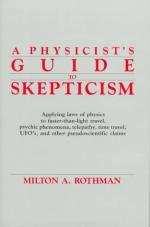|
This section contains 536 words (approx. 2 pages at 300 words per page) |

|
Whether science fiction novels refer to it as warp speed, hyperspeed, or lightspeed, the prospect of traveling at the speed of light or faster has enthralled humanity for decades. The possibility of traveling at speeds millions of times faster than those at which people travel today has been the focus of much debate and research. Faster-than-light travel is necessary for space journeys because of the huge distances between stars and star systems. The nearest star to Earth, not including the Sun, is 4.3light-years away. This means that at the speed of light it would take 4.3 years to get there and 4.3 years to return. The Milky Way Galaxy is more than 100,000 light-years across and is only one galaxy in what is believed to be billions. No human could survive for 100,000 years with current medical techniques, and so faster-than-light propulsion would be necessary to make such a trip...
|
This section contains 536 words (approx. 2 pages at 300 words per page) |

|


